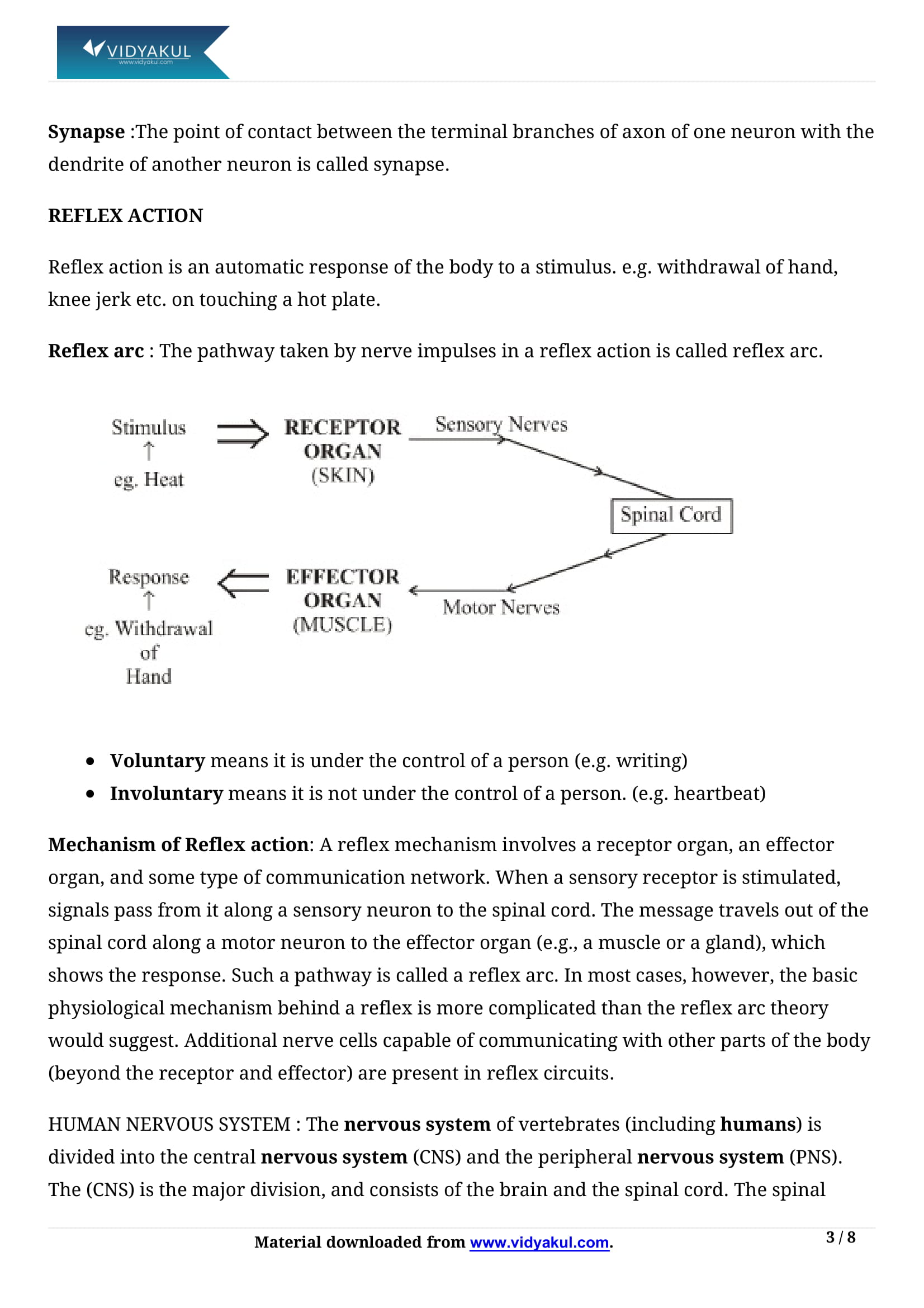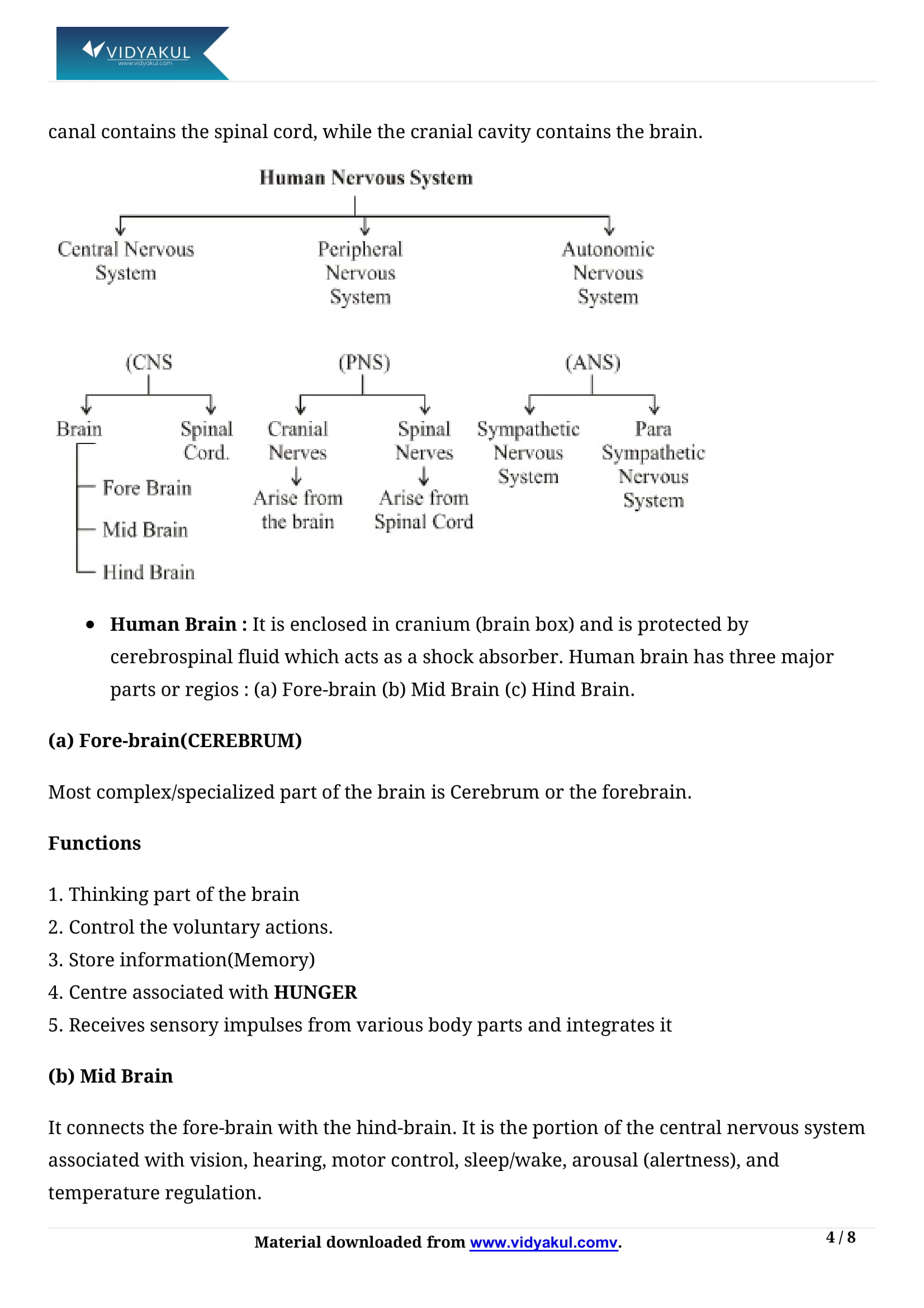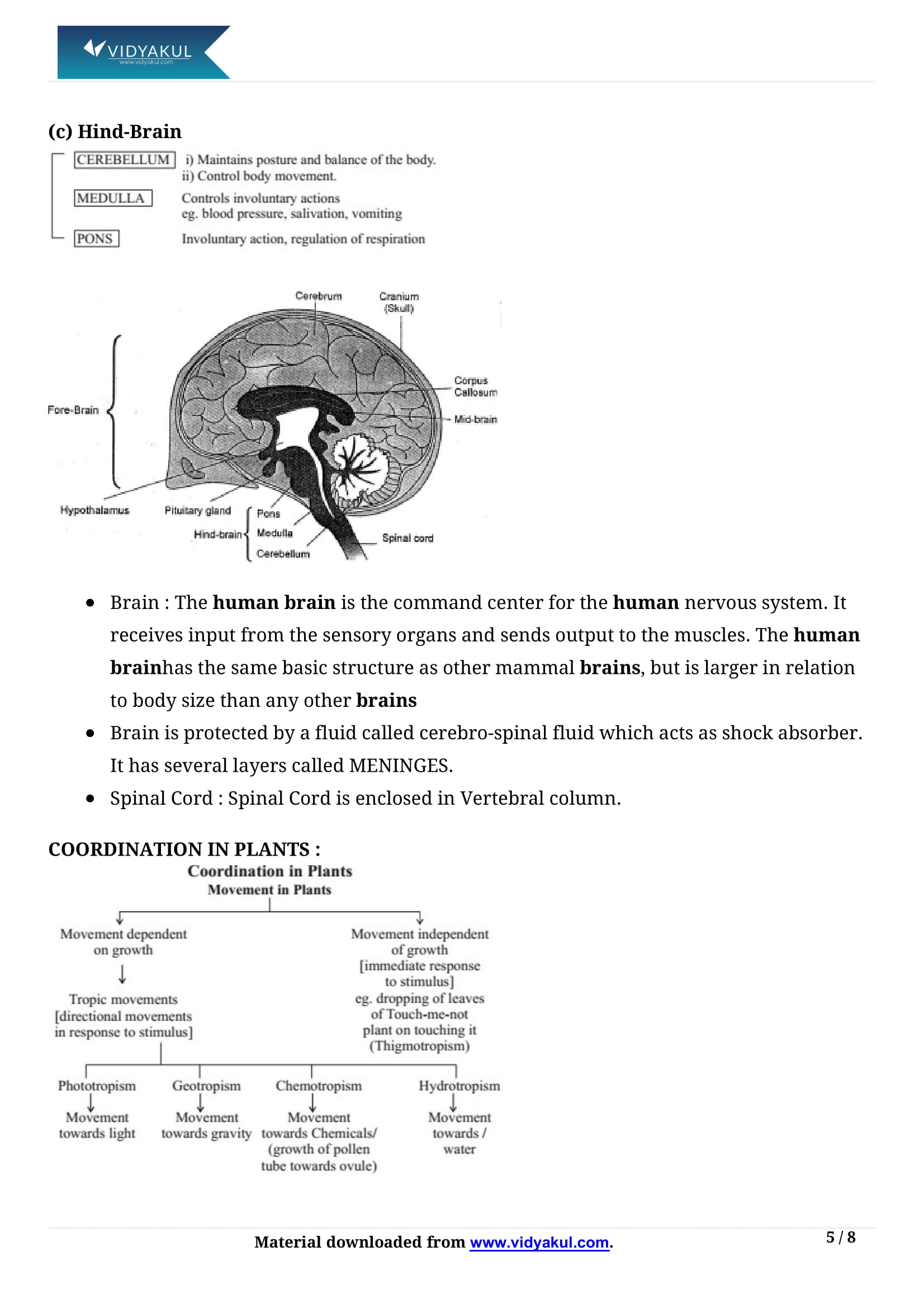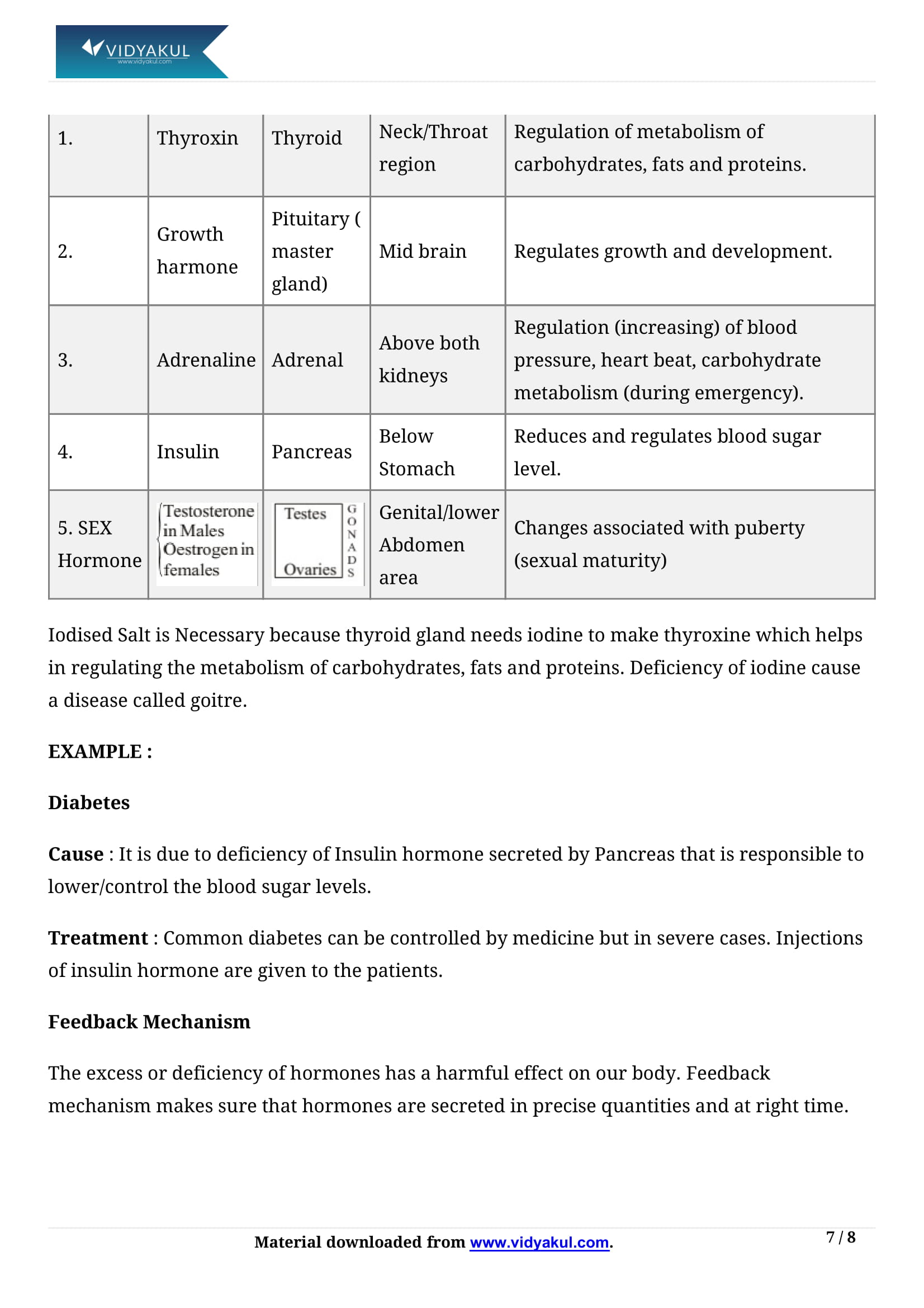Control and Coordination Class 10 Notes
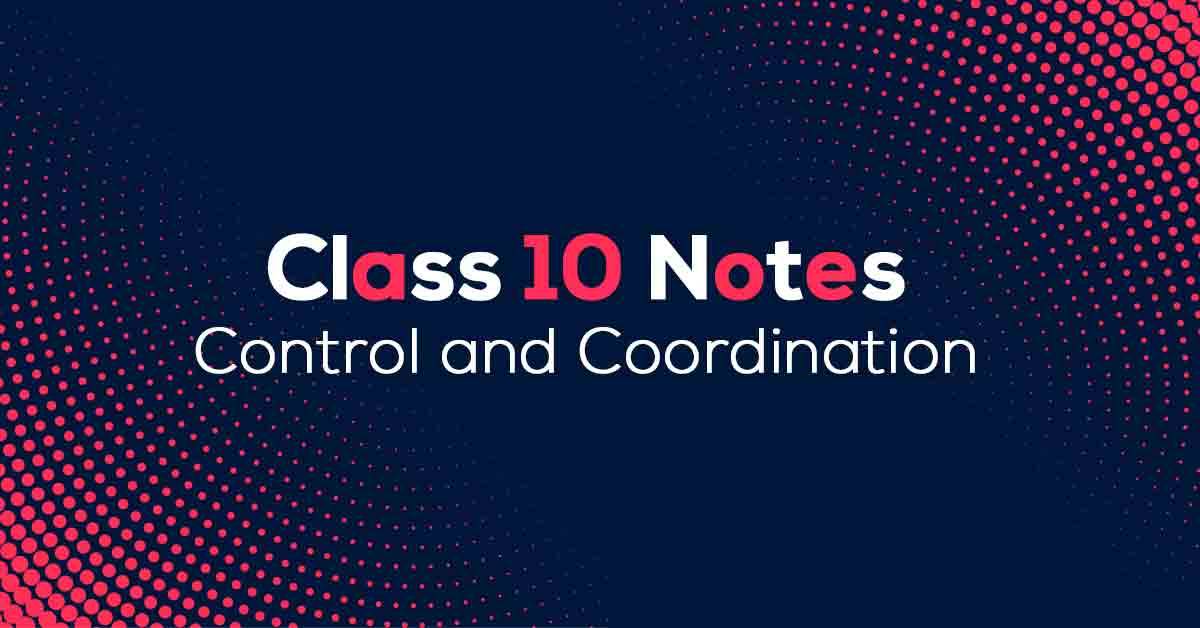
Chapter 7 Control and Coordination
The Control and Coordination section will cover the nervous and endocrine systems that produce and release hormones. Chapter 7 of the NCERT notes for Grade 10 Science helps students become familiar with the concepts of management and coordination.
Vidyakul offers over 2400 exercises on the Vidyakul portal. Along with this, there are 7 reference books to help improve students' conceptual skills. These notes are compliant with the latest CBSE guidelines. Practicing notes builds students' confidence. This article describes exercises and text questions related to control and coordination in Class 10 NCERT. Read on to find out more.
CBSE CLASS 10th SCIENCE CH-7
Points to Remember
We have provided some of the important points related to NCERT Class 10 Science Chapter 7 as mentioned below:
The three types of neurons are sensory, motor, and relay neurons.
Reflex action refers to an effector’s spontaneous, automatic, and involuntary response to a stimulus.
Abscisic acid promotes the dormancy of buds and seeds. It causes plant stomata to close and leaves and fruits to fall.
Plants exhibit two types of movement: one that is dependent on growth and one that is independent of growth.
Tendrils of bitter gourd and passion flower move in response to touch, a phenomenon known as thigmotropic movement.
The thyroid gland secretes thyroxine, which regulates metabolism.
Topics and Sub-topics
The answers in these NCERT notes are presented in simple, understandable language so that students can easily understand them. These notes include answers to all questions and exercises from NCERT textbooks. Vidyakul NCERT notes makes it easy to complete assignments and homework. These solutions from Vidyakul also help you prepare for various competitive exams and Olympiads.
Before delving deeper into NCERT's Year 10 Chapter 7, let's look at the topics and sub-topics related to Year 10 Chapter 7 :
Few Important Questions
What is the function of the Central nervous system?
The central nervous system (CNS) controls most functions of the body and mind. It consists of two parts: the brain and the spinal cord. The brain is the centre of our thoughts, the interpreter of our external environment, and the origin of control over body movement.
What are some facts about the human brain?
1. 60% of the human brain is composed of fat
2. The brain contains about 100 billion neurons and 100 trillion connections
3. The texture of the brain is similar to that of firm jelly
How many parts does the human eye have?
The human eye totally consists of 7 parts that work together.
The three types of neurons are sensory, motor, and relay neurons.
Reflex action refers to an effector’s spontaneous, automatic, and involuntary response to a stimulus.
Abscisic acid promotes the dormancy of buds and seeds. It causes plant stomata to close and leaves and fruits to fall.
Plants exhibit two types of movement: one that is dependent on growth and one that is independent of growth.
Tendrils of bitter gourd and passion flower move in response to touch, a phenomenon known as thigmotropic movement.
The thyroid gland secretes thyroxine, which regulates metabolism.
What is the function of the Central nervous system?
What are some facts about the human brain?
How many parts does the human eye have?
Learn more about it in Control and Coordination Class 10 Notes pdf.
Download Latest Class 10 Sample Papers 2019 for Board Exams
- CBSE Class 10 Sample Papers 2019 PDF
- CBSE Class 10 Maths Sample Papers 2019 PDF
- CBSE Class 10 Science Sample Papers 2019 PDF
- CBSE Class 10 English Sample Papers 2019 PDF
- CBSE Class 10 Hindi Sample Paper 2019 PDF
- CBSE Class 10 Social Studies Sample Papers 2019 PDF
Download this solution for FREE Download this PDF
Download Vidyakul App for more Important notes, PDF's and Free video lectures.


